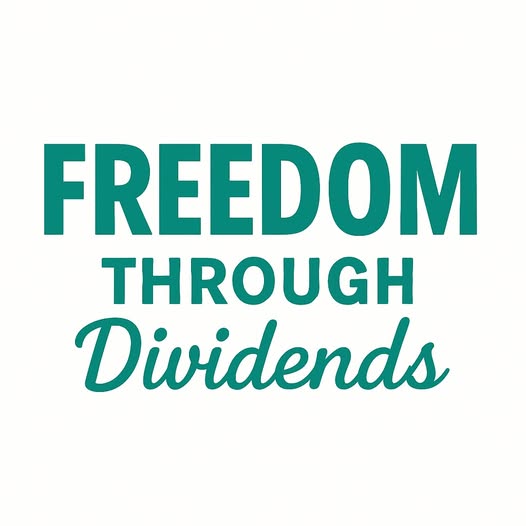Are you looking for a way to boost your investment income without taking on too much risk? Dividend-paying stocks are popular among those seeking income. But, picking individual stocks can be tough.
Exchange-Traded Funds (ETFs) offer a way to diversify your dividend investments. They let you invest in different assets, sectors, and places. By using ETFs focused on dividend growth, you can get a steady income.
This method makes investing easier and opens up growth chances. As you learn about ETFs, you’ll see how to create a dividend strategy that fits your financial goals.
Key Takeaways
- ETFs provide a diversified way to invest in dividend-paying stocks.
- Dividend growth ETFs can help create a steady income stream.
- A well-crafted ETF dividend strategy can support long-term financial goals.
- Using ETFs simplifies the investment process.
- ETF dividend strategies can be tailored to individual investor needs.
Understanding Dividend ETFs and Their Benefits
Exploring ETF dividend investing starts with knowing the basics of dividend ETFs. These funds aim to give investors a steady income by following a specific dividend-focused index.
What Are Dividend ETFs?
Dividend ETFs are funds that track a group of stocks that pay dividends. They let you invest in many companies with just one investment. This way, you can spread your risk.
“The ETF Guide” by Investopedia, ‘Dividend ETFs offer a convenient way to invest in a diversified portfolio of dividend-paying stocks, providing regular income and potentially lower volatility'”
. They help balance out the risks of investing in single stocks.
Advantages of Dividend ETFs Over Individual Stocks
Dividend ETFs have big pluses over investing in individual stocks. They offer diversification, which can make your income more stable and lower risk. They also make investing easy, as you can buy into many stocks with one move.
Moreover, they have professional management. The fund managers pick and adjust the stocks for you. This is great for those who don’t have the time or know-how to manage stocks themselves.
When picking the best ETFs for dividends, look at their index, fees, and past performance. This helps you choose wisely, matching your investment goals.
Maximizing Dividends with ETFs: Core Principles
To get the most out of dividend ETFs, you need to know how they work. It’s not just about picking a fund. You must understand the basics of these investments.
How Dividend ETFs Generate Income
Dividend ETFs make money by combining funds to buy stocks that pay dividends. The dividends from these stocks go to the ETF’s shareholders. This way, investors can spread their risk across many companies.
Distribution Schedules and Reinvestment Options
Dividend ETFs pay out money regularly, like monthly or quarterly. You can choose to get this money as cash or to reinvest it. Reinvesting can really boost your returns by letting you buy more shares.
The Compounding Power of Dividend Growth
Investing in dividend ETFs for the long haul has big benefits. Reinvesting dividends can make your investment grow a lot over time.
| Investment | Annual Dividend | 5-Year Growth |
|---|---|---|
| Dividend ETF | $1,000 | 25% |
| Growth ETF | $500 | 50% |
Types of Dividend-Focused ETFs
Dividend ETFs come in many types, each suited for different investment strategies. This variety lets you pick the right ETFs for your income goals and investment style.
High-Yield Dividend ETFs
High-yield dividend ETFs focus on stocks with high dividend yields. They offer a steady income stream. High dividend ETFs are especially popular when interest rates are low.
Dividend Growth ETFs
Dividend growth ETFs invest in companies that raise their dividends over time. They’re great for those seeking income and potential growth. These ETFs focus on companies with a history of increasing dividends.
International Dividend ETFs
International dividend ETFs give you access to dividend stocks from around the world. They help diversify your portfolio and offer growth opportunities abroad.
Sector-Specific Dividend ETFs
Sector-specific dividend ETFs focus on specific industries like real estate or energy. They offer high yields and let you target sectors you think will do well.
Let’s compare these ETF types:
| ETF Type | Primary Focus | Typical Yield |
|---|---|---|
| High-Yield Dividend ETFs | High dividend yield stocks | Higher |
| Dividend Growth ETFs | Consistent dividend growth | Moderate to High |
| International Dividend ETFs | Global dividend-paying stocks | Varies by region |
| Sector-Specific Dividend ETFs | Specific industries (e.g., real estate, energy) | Varies by sector |
Knowing about the different dividend-focused ETFs helps you choose wisely. You can pick the ones that fit your financial goals and risk level.
Key Metrics for Evaluating Dividend ETFs
To understand dividend ETFs, you need to know several key metrics. These metrics help you make smart choices. They show how well your investment might do.
Dividend Yield Analysis
Dividend yield shows how much income you get from a stock’s dividend. When looking at dividend ETFs, ETF dividend yield comparison helps find the ones with the best income. This is based on their current price.
Current Yield vs. Historical Yield
It’s important to know the difference between current and historical yields. The current yield tells you about the ETF’s income now. The historical yield shows if it has been consistent in paying dividends.
Expense Ratios and Their Impact
Expense ratios are the costs of running the fund. A lower ratio means more of your money stays in your pocket. So, when picking dividend ETFs, look at their expense ratios. This helps avoid losing money to high fees.
Historical Performance and Consistency
Looking at a dividend ETF’s past is key. Check its dividend payments and overall performance. A consistent payout shows the fund is reliable and can keep providing income. ETF dividend payout ratios help understand if the dividends can keep coming.
Dividend Growth Rate Assessment
The dividend growth rate shows how fast dividend payments are increasing. A higher rate means the investment is growing. This could lead to more income in the future.
Top Dividend ETFs for Income Investors
Investors seeking income can look into top dividend ETFs. These funds offer a mix of stocks, which can lower risk and provide steady income.
Here are some top dividend ETFs for income investors:
Vanguard Dividend Appreciation ETF (VIG)
The Vanguard Dividend Appreciation ETF focuses on companies that raise their dividends over time. VIG follows the Nasdaq U.S. Dividend Achievers Index. This index includes companies with a history of raising their dividends.
SPDR S&P Dividend ETF (SDY)
The SPDR S&P Dividend ETF targets S&P 500 companies with a history of consistent dividends. SDY is known for its high dividend yield and low costs. It’s a favorite among income investors.
iShares Select Dividend ETF (DVY)
The iShares Select Dividend ETF tracks the Morningstar Dividend Yield Focus Index. It focuses on stocks with attractive yields. DVY has a diversified portfolio with stable dividend payments.
Schwab U.S. Dividend Equity ETF (SCHD)
The Schwab U.S. Dividend Equity ETF tracks the Dow Jones U.S. Dividend 100 Index. This index includes dividend-paying stocks with a history of consistent payouts. SCHD is known for its low costs and diversified holdings.
ProShares S&P500 Dividend Aristocrats ETF (NOBL)
The ProShares S&P 500 Dividend Aristocrats ETF focuses on S&P 500 companies with 20+ years of dividend increases. NOBL is great for those looking for dividend growth and stability.
| ETF Ticker | ETF Name | Expense Ratio | Dividend Yield |
|---|---|---|---|
| VIG | Vanguard Dividend Appreciation ETF | 0.08% | 1.83% |
| SDY | SPDR S&P Dividend ETF | 0.35% | 2.93% |
| DVY | iShares Select Dividend ETF | 0.38% | 3.24% |
| SCHD | Schwab U.S. Dividend Equity ETF | 0.06% | 3.03% |
| NOBL | ProShares S&P500 Dividend Aristocrats ETF | 0.35% | 1.98% |
When picking a dividend ETF, look at expense ratios, dividend yield, and the index it follows. A well-diversified ETF can offer a stable income and growth over time.
Building a Dividend ETF Portfolio Strategy

To get the most out of dividend ETFs, you need a solid plan. This means knowing how to put together a portfolio that fits your financial goals.
Core-Satellite Approach with Dividend ETFs
The core-satellite method is a top choice for dividend ETF portfolios. It mixes a big chunk of your money in a broad, diversified ETF with smaller amounts in specialized ones. This mix aims to balance safety with the chance for bigger gains.
Diversification Across Dividend ETF Types
Spreading out your investments is crucial for managing risk. With dividend ETFs, you can mix different types like high-yield, growth, international, and sector-specific ones. By mixing these, you can lower risk and possibly boost returns. For example, combining high-yield with growth ETFs can give you quick income and growth over time.
| ETF Type | Investment Focus | Risk Level |
|---|---|---|
| High-Yield | High dividend income | Moderate |
| Dividend Growth | Long-term growth | Low to Moderate |
| International | Global diversification | Moderate to High |
| Sector-Specific | Targeted sectors | High |
Balancing Growth and Income Objectives
It’s key to balance growth and income when picking dividend ETFs. You can do this by spreading your money across different ETF types. For example, put more in growth ETFs for long-term gains and less in high-yield ones for quick income.
Step-by-Step Guide to Implementing Your Dividend ETF Strategy
Implementing a dividend ETF strategy step by step can be very effective. To begin earning dividends with ETFs, you need a clear plan. This plan should match your financial goals.
Assessing Your Income Needs and Time Horizon
Before investing in dividend growth ETFs, you must assess your income needs and time frame. Think about how much income you need and when. This will help you decide how to allocate dividend ETFs in your portfolio.
Selecting the Right Dividend ETFs for Your Goals
Choosing the right dividend ETFs is key. Look for those with a history of consistent dividends and match your investment goals. Consider the ETF’s index, expense ratio, and dividend yield.
Setting Up Automatic Investment and Reinvestment Plans
Setting up automatic investment and reinvestment plans can be beneficial. This way, you invest a fixed amount regularly, regardless of market conditions. It also reinvests dividends for compounding benefits.
Monitoring and Rebalancing Your Portfolio
It’s important to regularly monitor your dividend ETF portfolio. This ensures it stays in line with your investment goals. Periodically rebalance to keep your asset allocation right. Also, consider taxes when making changes.
As
“The stock market is filled with individuals who know the price of everything, but the value of nothing.”
– this quote highlights the need for a solid strategy when investing in dividend ETFs.
Tax Considerations for Dividend ETF Investors
Taxes on dividend ETFs can be tricky, but knowing the rules helps you make better choices. As you explore ETF dividend investing, it’s key to grasp the tax scene. This knowledge is vital for boosting your investment gains.
Qualified vs. Non-Qualified Dividends
ETF dividends can be either qualified or non-qualified, affecting your taxes differently. Qualified dividends get taxed like long-term capital gains, if you hold them long enough. But, non-qualified dividends are taxed like regular income, which might be higher.
Tax-Efficient Placement of Dividend ETFs
Placing dividend ETFs wisely in tax-friendly accounts can cut down your taxes. Think about your investments’ tax traits and put them where they’ll save you the most.
Retirement Accounts vs. Taxable Accounts
For example, putting dividend ETFs in tax-deferred accounts like 401(k) or IRA can delay taxes until you take the money out. This might lower your taxes now. But, it could be smarter to keep tax-efficient investments in taxable accounts to lessen tax hits.
By getting the hang of these tax tips and smartly managing your dividend ETFs, you can improve your tax efficiency. This could also up your net earnings.
Common Mistakes to Avoid When Investing in Dividend ETFs

Investing in dividend ETFs can be a smart move for regular income and diversification. But, it’s important to avoid common mistakes. These can hurt your investment strategy.
Chasing Yield Without Considering Quality
Many investors focus too much on high yields. They overlook the quality of the companies behind these yields. This can lead to big problems, like dividend cuts or suspensions.
It’s key to check if the dividends are sustainable. Look at the financial health of the companies in the ETF.
Overlooking Expense Ratios
Another mistake is ignoring the expense ratios of dividend ETFs. Lower expense ratios mean more money in your pocket over time. Even a small difference can add up to big savings.
So, it’s smart to pick ETFs with low fees.
Ignoring Sector Concentration Risk
Many investors don’t think about the risk of sector concentration. Sector-specific ETFs can be risky if the sector falls. Spreading your investments across different sectors can help.
This way, you can get a more stable income stream.
Advanced Strategies for Enhancing ETF Dividend Growth
To boost your returns from dividend ETFs, try advanced strategies. These can increase your investment’s growth. As an investor, you know dividend ETFs are good, but there’s more to do.
Dividend Capture Strategies with ETFs
Dividend capture strategies mean buying ETFs right before dividends are paid and selling them soon after. You need to know when to buy and sell. This way, you can get more dividend income.
Combining Dividend ETFs with Other Income Investments
Mixing dividend ETFs with other income sources like bonds or REITs can make your portfolio more diverse. This mix can lower risk and raise returns. Key benefits include:
- Increased diversification
- Potential for higher overall returns
- Reduced reliance on a single income source
Using Options with Dividend ETFs
Options with dividend ETFs can add more income or protect against losses. You can use covered calls or protective puts. But, it’s crucial to know the risks and how options work.
Adding these advanced strategies to your investment plan can boost your ETF’s dividend growth. This way, you can reach your long-term financial goals.
Conclusion: Harnessing the Power of Dividend ETFs for Long-Term Wealth
You now know how dividend ETFs can help grow your wealth over time. They offer a steady income and the chance for your investments to grow. Choosing the right ETF is key to meeting your investment goals and risk level.
Building a diverse portfolio is crucial for long-term success. Use dividend ETFs as a main part of your portfolio. Adding other income sources can make your strategy even stronger.
By using the tips from this article, you can make dividend ETFs work for you. They are great for both new and experienced investors. They provide a smart way to earn income and increase your wealth.
FAQ
What are the benefits of using ETFs for dividend investing?
ETFs for dividend investing offer diversification. This can lower risk and make dividend income more stable. They also provide a cost-effective way to invest in many dividend-paying stocks.
How do I choose the best ETFs for dividend investing?
To pick the best ETFs, look at dividend yield and expense ratios. Also, check their historical performance and dividend growth rate. Make sure the ETF’s holdings and sectors match your investment goals.
What is the difference between high-yield dividend ETFs and dividend growth ETFs?
High-yield dividend ETFs focus on stocks with high dividends for immediate income. Dividend growth ETFs invest in companies with a history of increasing dividends. They offer potential for long-term income growth.
How do I maximize my dividend income with ETFs?
To boost your dividend income, reinvest dividends to use compounding. Choose ETFs with a history of consistent payments. Diversify your portfolio with different dividend ETFs.
What are the tax implications of investing in dividend ETFs?
The tax implications of dividend ETFs depend on the type of dividend and your tax status. Qualified dividends are taxed at a lower rate. Consider tax-efficient placement in tax-deferred accounts.
How do I evaluate the performance of my dividend ETF portfolio?
To check your portfolio’s performance, look at total return, dividend yield, and growth rate. Monitor the ETF’s expense ratio and compare it to benchmarks.
Can I use dividend ETFs to achieve my long-term wealth creation goals?
Yes, dividend ETFs can help with long-term wealth creation. They offer a regular income and potentially lower volatility. This can help you reach your long-term financial goals.
What are some common mistakes to avoid when investing in dividend ETFs?
Common mistakes include chasing yield without checking quality and ignoring expense ratios. Also, be cautious of unsustainable dividend payout ratios and sector concentration risk.
How can I use advanced strategies to enhance my ETF dividend growth?
For better dividend growth, try dividend capture strategies and combining ETFs with other income investments. Using options can also help optimize your income and reduce risk.

